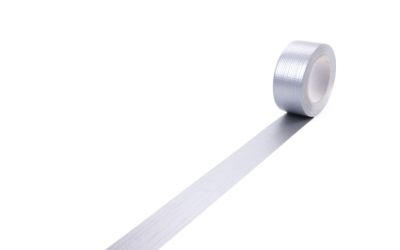Duct Tape Strategy Improves Infection Prevention

A simple roll of duct tape has proven to be an inexpensive solution to the costly and time-consuming problem of communicating with hospital patients who are isolated with dangerous infections.
A 504-bed Midwestern health system saved up to 2,700 hours and $110,000 a year by creating a "Red Box" safe zone, a three-foot square of red duct tape extending from the threshold of the door, to facilitate communication with patients on isolation or contact precautions, according to an abstract presented today at the 38th Annual Educational Conference and International Meeting of the Association for Professionals in Infection Control and Epidemiology (APIC).
Conducted by the infection prevention team at the Trinity Medical Center in the Quad Cities on the Iowa/Illinois border, the study revealed that by utilizing this safe zone, their hospitals were able to save time, money in unused gowns and gloves, and that the quality and frequency of communication between healthcare professionals (HCPs) and isolated patients increased.
Typically, HCPs must don personal protective equipment (PPE) before entering an isolated patients room before any type of communication. Dressing in gowns and gloves before each interaction is time-consuming, costly and creates communication barriers with patients. The study showed that HCPs could safely enter the Red Box area without PPE for quick communication and assessment. At Trinity, approximately 30 percent of interactions with patients on Contact Precautions were performed in the Red Box.
In a satisfaction survey, 67 percent of healthcare workers said that the Red Box lessened barriers when communicating with patients. Also, 79.2 percent reported that the Red Box saved time in not having to put on and remove PPE. The same number said healthcare workers could assess and communicate with patients more easily. The box also serves as an additional visual cue to remind HCPs that they are entering an isolation room, which is usually only indicated by a sign outside the patients room.
"This is an innovative strategy that could be of great value to other hospitals," said study author Janet Nau Franck, RN, MBA, CIC. "It costs as much as a roll of tape, and yet pays off with significant savings in time, money and increased satisfaction for both patients and staff."
"This is a simple but very effective mechanism to conserve resources and yet remain in touch with the patient," says APIC 2011 president Russell N. Olmsted, MPH, CIC. "It can serve as a model for healthcare providers who strive to deliver better care and reduce costs."
The study took place from January 2009 to December 2010.
Unraveling a Candida auris Outbreak: Infection Control Challenges in a Burn ICU
March 19th 2025A Candida auris outbreak in a burn intensive care unit (BICU) in Illinois has highlighted the persistent challenges of infection control in high-risk health care settings. Despite rigorous containment efforts, this multidrug-resistant fungal pathogen continued to spread, underscoring the need for enhanced prevention strategies, environmental monitoring, and genomic surveillance.
Unmasking Long COVID: Dr Noah Greenspan on Recovery, Research Gaps, and the Future of Treatment
March 18th 2025Dr Noah Greenspan discusses the evolving understanding of long COVID, current treatment strategies, diagnostic challenges, and the critical need for research and awareness in post-viral syndromes.